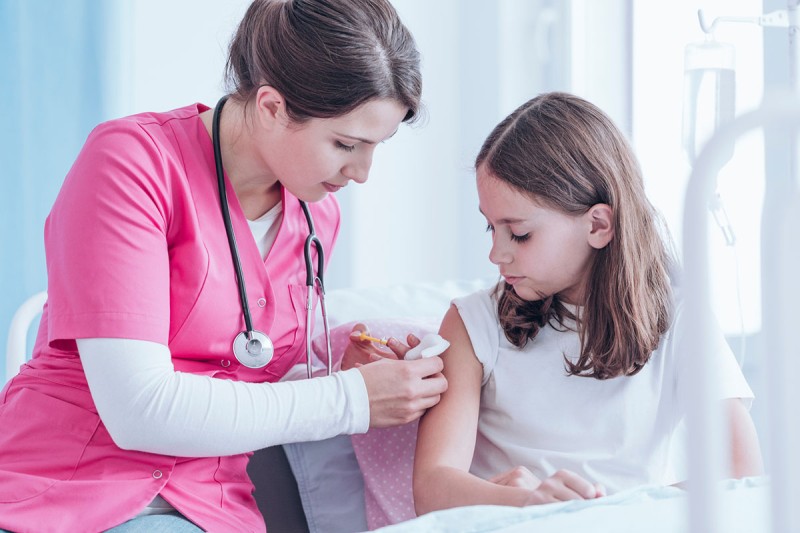
Update: On October 5, 2018, the US Food and Drug Administration announced that it had expanded the approved use of the Gardasil 9 vaccine to include women and men aged 27 through 45 years. “Today’s approval represents an important opportunity to help prevent HPV-related diseases and cancers in a broader age range,” said Peter Marks, director of the FDA’s Center for Biologics Evaluation and Research, when making the announcement.
Original post: According to a recent report from the Centers for Disease Control and Prevention (CDC), the number of cancers caused by the human papilloma virus (HPV) has risen significantly in recent years. There were slightly more than 30,000 cases in the United States in 1999 and more than 43,000 in 2015. This includes not only cervical cancer but also cancers of the vagina, vulva, anus, penis, and oropharynx (the middle portion of the throat, beginning at the back of the mouth and including the base of the tongue, the tonsils, and the soft palate).

The first HPV vaccine was approved by the US Food and Drug Administration in 2006. Vaccination is given as a series of two or three shots. It is currently recommended for both girls and boys beginning at age 11 or 12. The vaccine can be given to children as young as nine, and it’s recommended for women through age 26 and men through age 21 if they didn’t get it when they were younger. For men who have sex with men, people who are transgender, and those who are immunocompromised, the vaccine is recommended through age 26.
According to another CDC report released last month, 66% of adolescents between the ages of 13 and 17 have had one dose and only 49% have received the full series of shots. We recently spoke with Memorial Sloan Kettering gynecologic oncologist Chrisann Kyi about why it’s so important for young people to get vaccinated. We also asked her to dispel some common myths about the vaccine.
What is HPV, and how is it spread?
HPV is a type of virus that lives on the surface of the skin. There are actually more than 100 different varieties. Many of them cause warts, like those found on the hands and feet. About 40 kinds of HPV live on the genitals and anus, and inside the mouth and throat. Those types are transmitted through sexual activity.
The highest-risk strains for cancer in the genital and throat areas are HPV 16 and 18. HPV 6 and 11 are associated with most genital warts. The newest HPV vaccine, Gardasil® 9, protects against all four of those plus five other cancer-causing strains. Altogether, the viruses covered in the vaccine contribute to more than 90% of cervical adenocarcinomas and genital warts.
How effective are HPV vaccines?
HPV vaccines are very effective. In the trials that led to the vaccines’ approvals, they were found to be nearly 100% protective against persistent cervical infection with HPV types 16 and 18. They also protected against the changes to the cervical tissue that these persistent infections can cause.
Two studies showed that protection against the HPV types that are included in the original Gardasil, the first vaccine approved, has been found to last for at least ten years, and the data is still being collected. Long-term studies of vaccine efficacy are in progress. As more time passes from when Gardasil first came out, we are going to better understand the total duration of protection.
Why is HPV vaccination recommended only through someone’s early or mid-20s?
HPV infections are very common in both men and women. Most people have had an infection at some point in their lives without even knowing it, and most of them are clear of the virus within a few months. The virus becomes a problem only when it doesn’t go away — after remaining in the body for ten or 20 years it can begin to drive the formation of cancer.
The assumption is that by the time someone is in their 20s, they have already been exposed to the virus through sexual activity. At that point, they will no longer benefit from vaccination. This is why it’s important to provide the vaccine early, before someone becomes sexually active.
Some studies conducted by Merck, the company that makes Gardasil, have suggested that women up to age 45 may benefit from the vaccine. If you are above the recommended age and think the vaccine might help you, you should discuss it with your doctor. However, it’s likely that insurance won’t cover it for people who are older than 26.
What concerns have you heard about the HPV vaccine?
A lot of people have hesitation about the vaccine because they think they might contract the virus from it and develop cancer. It is similar to when people are convinced they have contracted the flu from a flu vaccine.
But that’s a big misconception. The HPV vaccine doesn’t contain the complete virus. It contains a protein that’s present in the outer coat of the virus. Vaccination works by exposing someone’s immune system to this protein, so they are able to develop antibodies that recognize the protein. Then if they do contract the virus in the future, antibodies that remember the protein and can fight the virus are already present in the body, like soldiers ready to go to battle.
What about people who don’t want their kids vaccinated because they don’t think the HPV vaccine has undergone enough safety testing?
Clinical trials that were conducted for the vaccine, as well as follow-up studies since it was approved, have shown that it’s very safe. The side effects of the shots are minimal — they are mainly related to soreness at the injection site or flulike symptoms that may develop while your immune system is responding to the vaccine. You hear some anecdotal stories about other side effects, but those are not based on any science that I know of.
In fact, I know of no long-term consequences related to the HPV vaccine.
Are there other reasons that vaccination rates are not higher?
Some women think that if they’re already getting regular checkups from their gynecologist and undergoing recommended HPV screening tests and Pap smears, they don’t need the vaccine. But actually, it should be the other way around. Because we know it works so well, the vaccine should be the driving measure for cancer prevention. Pap smears and other tests can be that extra layer of support.
Why is it so important to bring immunization rates up?
The numbers are definitely not as high as we would like them to be. A rate of 60% or so is not going to be able to provide herd immunity, which is when a high enough proportion of a population has immunity that it becomes difficult for an infection to spread.
To get to a level that is considered good for public health from an epidemiological standpoint, we’d like to see rates that are closer to 80%. And rates need to be that high in both men and women. When more men are vaccinated, it lowers the overall prevalence of cervical cancer in women, as well as protects the men from other HPV-associated cancers and genital warts.





